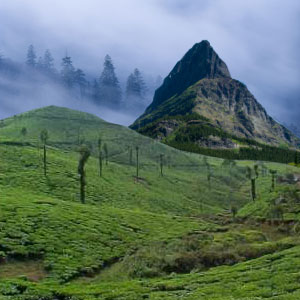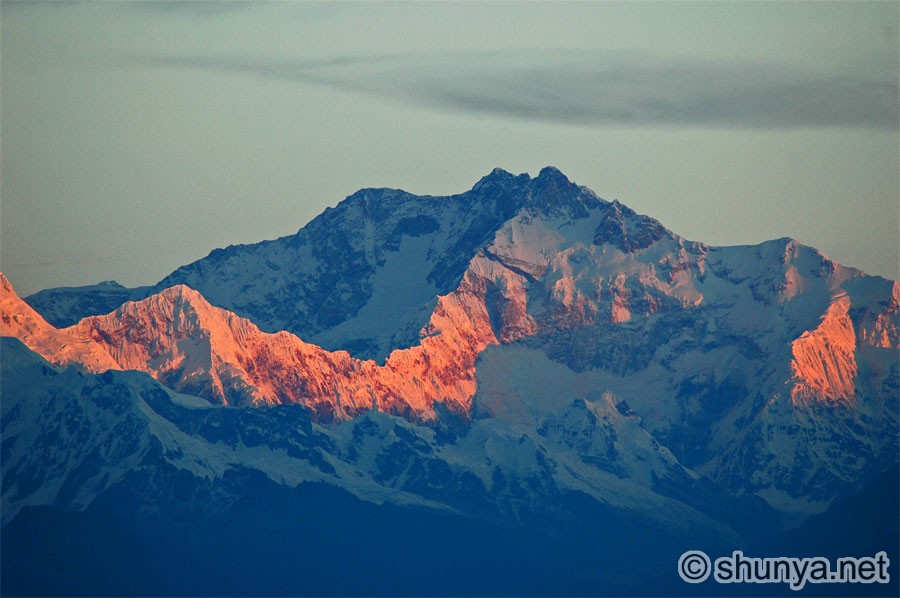



Darjeeling - a Himalayan Queen
Attractions

Monastries: The Monastery at Ghoom, about 6 km south of the city has a 4.57-m high statue of a seated Maitreya Buddha (the coming Buddha) that attracts adherents from far and wide. Aloobari Gompa, about 3 km from the city centre, is a good place to drop by for some interesting Tibetan and Sikkimese religious accessories you can also buy as souvenirs. About 11 km from the city, with the backdrop of Kanchenjunga, is the colorful Bhutia Busty Gompa, whose library has the original Tibetan Book of the Dead, amongst thousand other Buddhist texts.
The Observatory Hill: For a good visual sweep of the entire purlieu climb up the Observatory Hill or the Mahakal Baba ko Sthan, held sacred by Hindus and Buddhists. The Kali shrine and the colorful fluttering Buddhist prayer flags strung between the pine trees make a beatific spectacle.
Himalayan Mountaineering Institute: Perched on the Jawarhar Parbat, about 2 km from Chowrasta, is an institute for training the adventure mongers. Why you should go there for is the institute's collection of historic mountaineering equipment, specimens of Himalayan flora and fauna, a relief model of the Himalayas and a record of all attempts to scale the Mount Everest.
Zoological Park: Neighboring the Himalayan Mountaineering Institute is the Padmaja Naidu Zoological Park that houses the Siberian tigers, Himalayan Black bear and the Red Panda. Not to be missed is the Snow Leopard breeding centre here.

Passenger Ropeway: Situated at 3 km from the city center at the North Point is the 5-km long India's first passenger ropeway that connects Darjeeling with Singla Bazaar on the Ranjit River at the bottom of the valley. A ride on this cable-car repletes the theme of adventure so typical of this roof-top city.
Adventure escapades: Trekking begins in Darjeeling and proceeds through Maneybhanjyang, Tonglu, Sandakphu and ends in Phalut. Teesta river is ideal for whitewater rafting.
Festivals: The Beni Mela is held on the banks of the River Teesta in January, the New Year for the Bhutias and the Lepchas. Tibetan New Year is celebrated in February and is marked by great festivities, religious ceremonies and colourful folk dances in monasteries. Every 14-20 November, the Teesta Tea and Tourism Festival is held here with cultural performances, tea estate visits and organised tours, treks and walks around the region.
For Indian and Chinese food, check out Park (Laden La Road) and for wholesome vegetarian thalis and Indian snacks head to Hasty Tasty (the Mall).

Mirik (48 km): At an altitude of 1,730 m this sequestered hill-station is carpeted with forests of Cryptomeria Japonica, orange orchards, tea gardens and cardamom plantations. Sumendu Lake, with its 3.5 km of cobbled promenade, offers boating facilities. Also visit the carpet-weaving centre at Krishnanagar. Trekking tracks to Kurseong and Sandakphu begin here.
Kurseong: The toy train hisses past this station midway between Darjeeling from Siliguri is Kurseong (1,458 m) famous for the Deer Park and Makaibari Tea Estate.
Phalut & Sandakphu: About 60 km away is a joint that commands the best views of the Himalayan grandeur. Giant flowering Rhododendron trees and a pointillism of reds, pinks and whites Dwarfs comprise of the en route trail. On attaining heights of over 3,048m, one is surrounded by skeletal trees devoid of leaves and branches, which are especially eerie when the clouds roll in and envelop the area. Sandakphu with over 650 avian species is an ornithologists paradise.
Rock Garden, Barbotay (15 km): The Chunu falls cascading over the boulders provides an ecstatic view.
Hop next to: Gangtok (120 km), Guwahati, Kolkata (500 km)


Access
RAIL : The two nearest railheads are Siliguri (77 km) and New Jalpaiguri (88 km) which have direct railway connections with Calcutta, Delhi, Guwahati and other major cities of India. From Siliguri, you can also board the Darjeeling Himalayan Railway (toy train) that takes around 8 hours, or a taxi that will take 2-3 hr to get to Darjeeling.
ROAD : Darjeeling is connected by road with Siliguri, Bagdogra, Gangtok, and Kathmandu across the Nepali border. From Bagdogra or New Jalpaiguri, board a taxi/ scooter/ rickshaw to Siliguri 10 and 5 km away respectively. Buses from Darjeeling usually leave from the Bazaar bus stand on Hill Cart Road.
Distances from nearby cities :
| Siliguri : | 77 km |
| New Jalpaiguri : | 88 km |
| Bagdogra : | 90 km |
| Gangtok : | 120 km |
| Guwahati : | 590 km |
| Calcutta : | 500 km |
| Kathmandu : | 677 km |
Stay At
| Heritage Hotels in Darjeeling : | |
| Windamere Hotel | Fortune Resort Central |
| Central New Elgin Hotel | |
| Three Star Hotels in Darjeeling : | |
| Hotel Sinclair's Darjeeling | |
| Resorts : | |
| Mayfair Hill Resort ( 3 Star) | Hotel Swiss ( 3 Star) |
| Two Star Hotels in Darjeeling : | |
| Hotel Seven Seventeen | |
Categories:
Darjeeling,
India Tourist Spots

0 comments:
Post a Comment